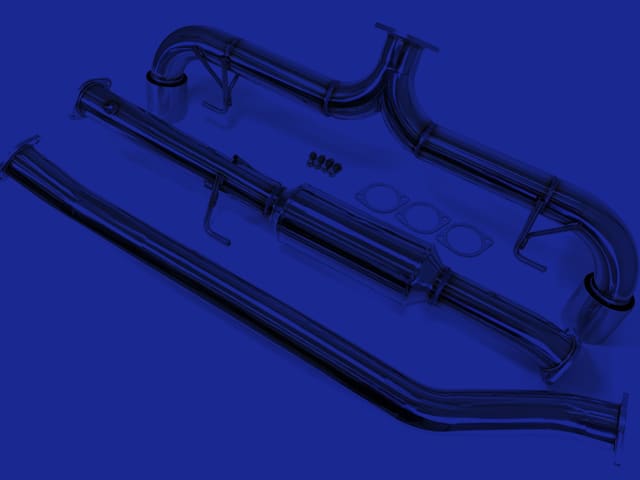
Around 3 years ago, the 80mm Cat Back Exhaust was released for the 3rd Gen Mazda 3. During this time, many have enjoyed the increased sound, performance, and looks that it offers. As we have been developing the Turbo Kit for the 2.5L 3rd Gen Mazda 3, we have also had a chance to refine and tune the 80mm Cat Back Exhaust to further improve the tone and sound of the exhaust while reducing drone for 3’s equipped with the Turbo Kit. That is why we are excited to release the Turbo Kit specific 80mm Cat Back Exhaust to those of you who have or are looking to pick up the Turbo Kit for your 2014-2018 2.5L Mazda 3.

With the original 80mm CBE installed on our Turbo Kit-equipped Mazda 3, we found that while the sound was good, the drone it created in the cabin was too aggressive for our liking. To combat this, we tested multiple mid-pipes and axle-back combinations with different resonator configurations to find the best solution. From this testing, we found that the combo that worked best was to keep the same mid pipe setup but modify the axle back so that no resonators were used. This substantially reduced drones while adding a more aggressive tone at higher RPMs. With that being said, if you’re upgrading from a stock or 60.5mm exhaust, there will be a significant increase in NVH (Noise, Vibration, and Harshness), but, in our opinion, this is offset by the tons of fun noises it offers. Since the axle back is the only component changed for the Turbo Kit-specific exhaust, if you already have an 80mm CBE and want to upgrade, all you need is the non-resonated axle back to take advantage of the reduced drone and improved sound. To get a good idea of how the 80mm CBE will sound during different driving conditions, check out the video below.

The Turbo Kit 80mm CBE also provides the same great appearance of the original 80mm CBE. The Mazda 3 exhaust for the sedan and hatchback features 100mm or ~4” tips. On the hatchback, this helps fill out the bumper cutouts, and the slant cut design helps them match the flow of the bumper profile. On the other hand, the sedan features a single-wall design so that water and other debris don’t get caught in the tip since they are hidden behind the bumper and angled down. No matter which model you have, these features help the car’s rear stand out and provide an aftermarket look that is as subtle and classy as it should have been from the factory.

The great build quality and material are also carried over from the original 80mm Cat Back Exhaust using T-304 stainless steel that is polished to a mirror-like finish. This helps keep the CBE looking new and protects against corrosion for a long time to come. All joints are TIG welded to ensure durability along with a nice appearance. The resonators use a flow-thru design so exhaust flow remains uninterrupted while drone is kept down. Check out the product page for more pictures and details on the Turbo Kit 80mm CBE.
Connect with us:

GET THE 80mm Non-Resonated Cat Back
The 80mm Non-resonated Cat Back is the perfect sound for the 2.5L 3rd Gen Mazda 3 Turbo Kit
You may also like:
- Axle Back Exhaust for 2019+ Mazda 3 & CX-30!
- Turbo Kit in Development for 2014+ Mazda 3 & 2013+ Mazda 6
- Coming Soon: The New Turbo Inlet Pipe – Mazda SkyActiv-G 2.5L
























